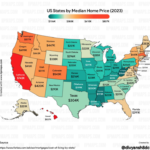With over 8.5 billion searches being conducted on Google every day, Google has become an indispensable part of our daily lives, and despite offering many of its services for free, it has a market capitalization of over $2 trillion.
In this article, we explore how Google manages to offer a free service while remaining hugely profitable.
The origins of Google
Google began as a university project launched by Larry Page and Sergey Brin in 1998 with the goal of organizing the world’s information and making it universally accessible and useful. The name “Google” comes from the word “Googol,” a one followed by 100 zeros, referring to the vast amount of information the search engine can index.
Expansion and product offerings
Initially a simple search engine, Google has introduced several groundbreaking products over the years.
- Gmail (2004)
- Google Maps (2005)
- YouTube Acquisition (2006)
- Android (2008)
- Google Chrome (2008)
Google has also branched out into hardware with products like its Pixel smartphones and Chromebook laptops, and is now investing heavily in artificial intelligence.
Revenue Model
Despite offering a number of free services, Google It generates significant revenue primarily through advertising. Here is a breakdown of Google’s revenue sources in 2022:
- Google Search Ads: $162 billion
- Google Network Ads: $32.78 billion
- YouTube Ads: $29 billion
- Google Play Store and Hardware: $29 billion
- Google Cloud: $26 billion
Freemium Model
Google follows a freemium model for many of its services: basic versions of products like Gmail, Google Drive, and YouTube are free, but premium features are paid for, allowing users to try the service before buying.
Data Collection and Targeted Advertising
Google is able to provide its free services largely through its data collection practices. Data from users’ search, email, and YouTube viewing habits is used to target ads. This personalized ad experience is a major driver of revenue.
ChallengeeAnd future prospects
Despite its success, Google faces challenges.
- Privacy issues: Increasing awareness and regulations regarding data privacy.
- Racing with AITools like ChatGPT provide direct answers without advertising, potentially threatening Google’s dominance of search.
Google Pay (GPay)
Launched as Google Wallet in 2015 and rebranded to Google Pay in 2018, GPay has become a key player in the digital payments space, allowing users to make secure payments online, in apps, and in stores. GPay integration By partnering with the Google ecosystem, you provide a seamless experience to your users, drive adoption, and contribute to Google’s revenue streams.
Conclusion
Google’s business model, which combines free services with sophisticated data-driven advertising, has been incredibly successful, but advances in digital privacy and AI technologies are creating challenges that Google must overcome to maintain its status as a tech giant.








